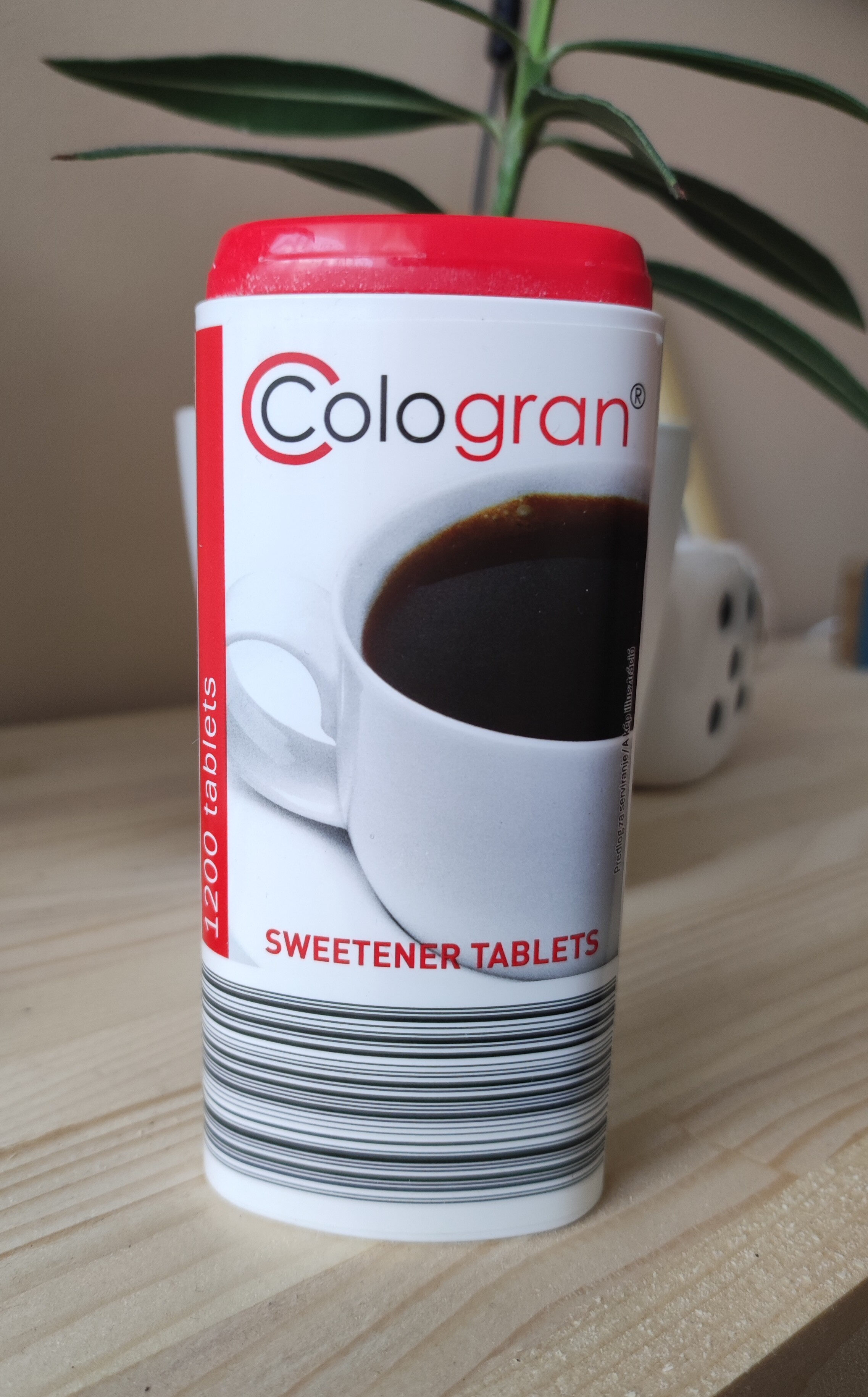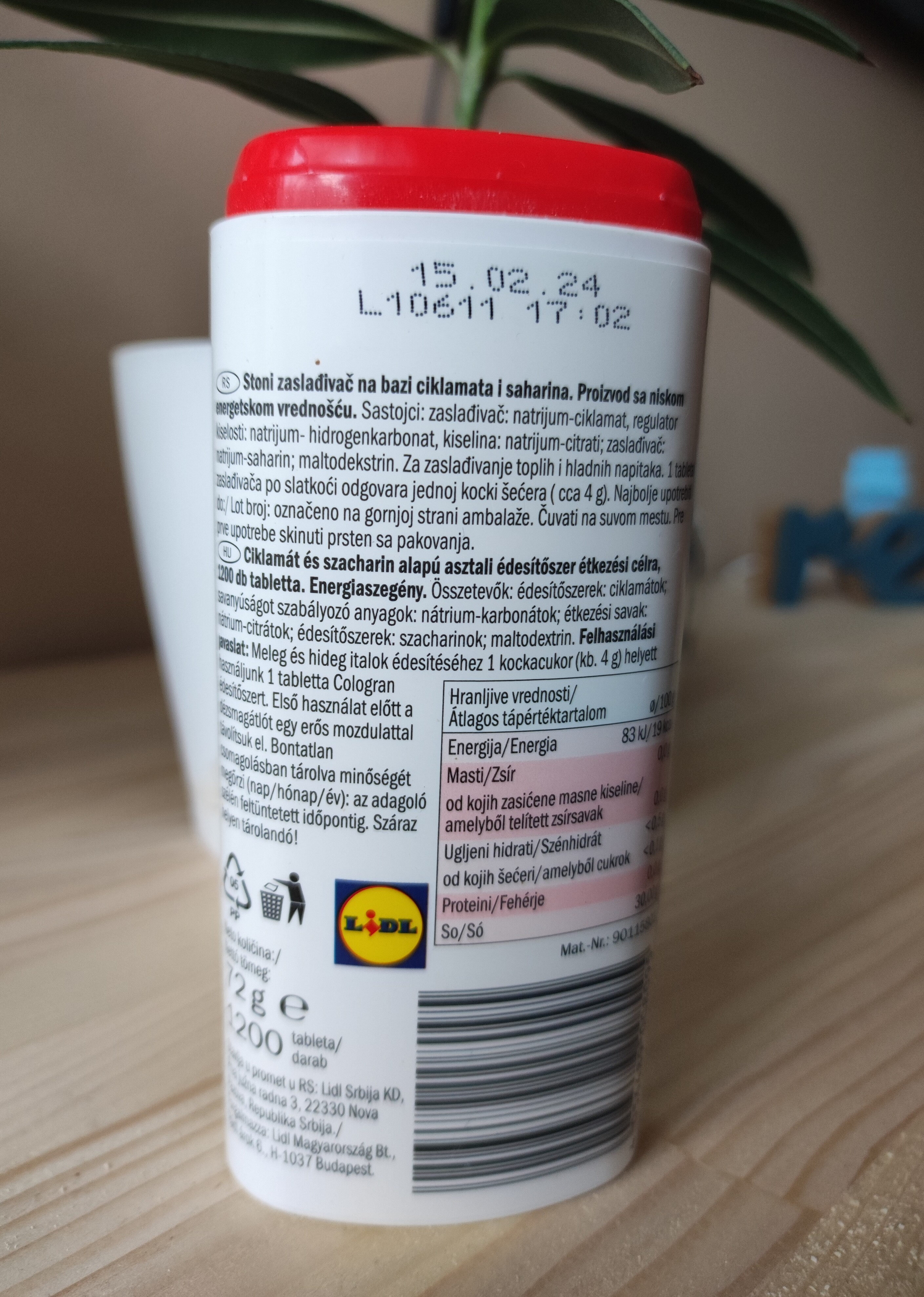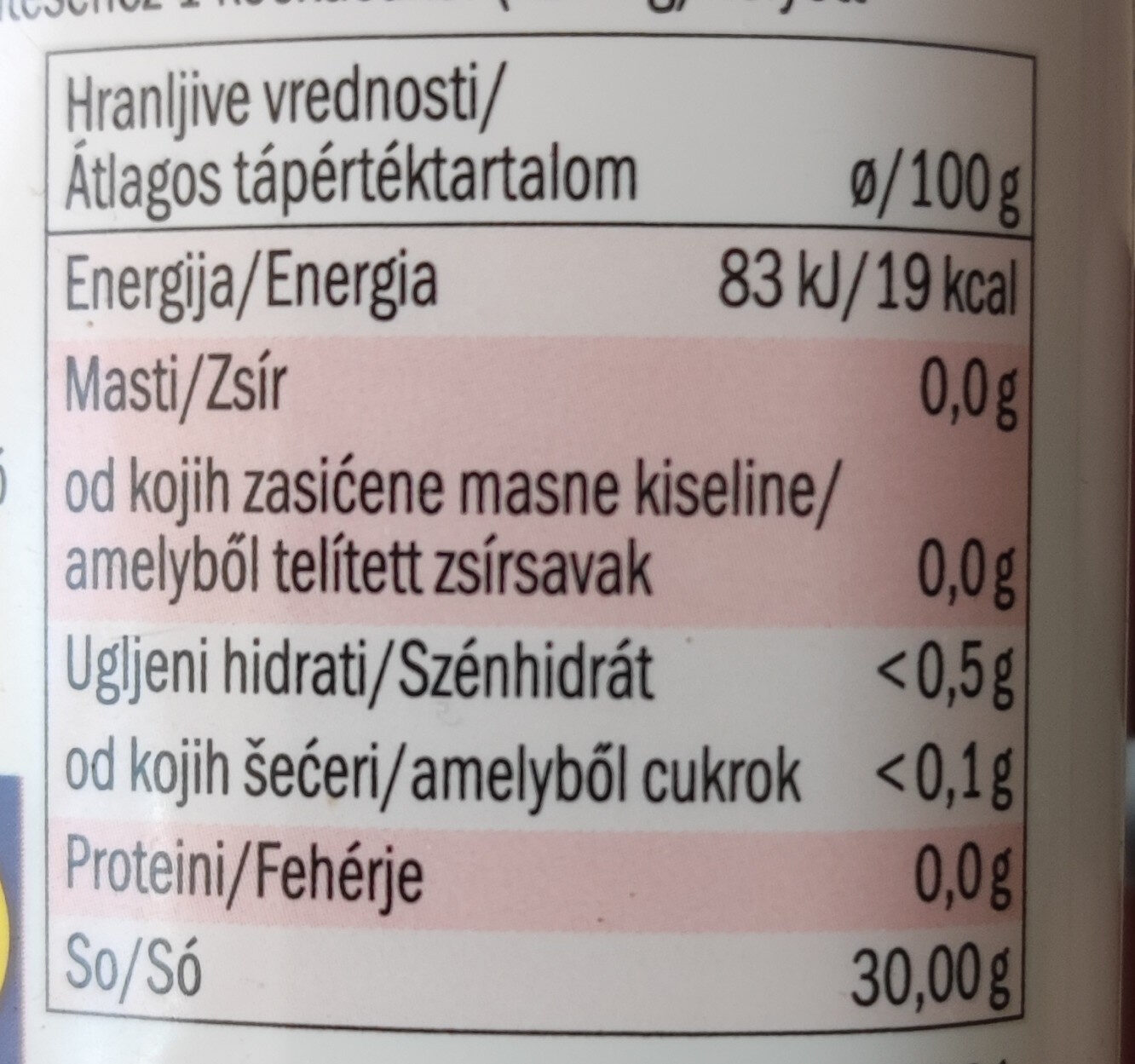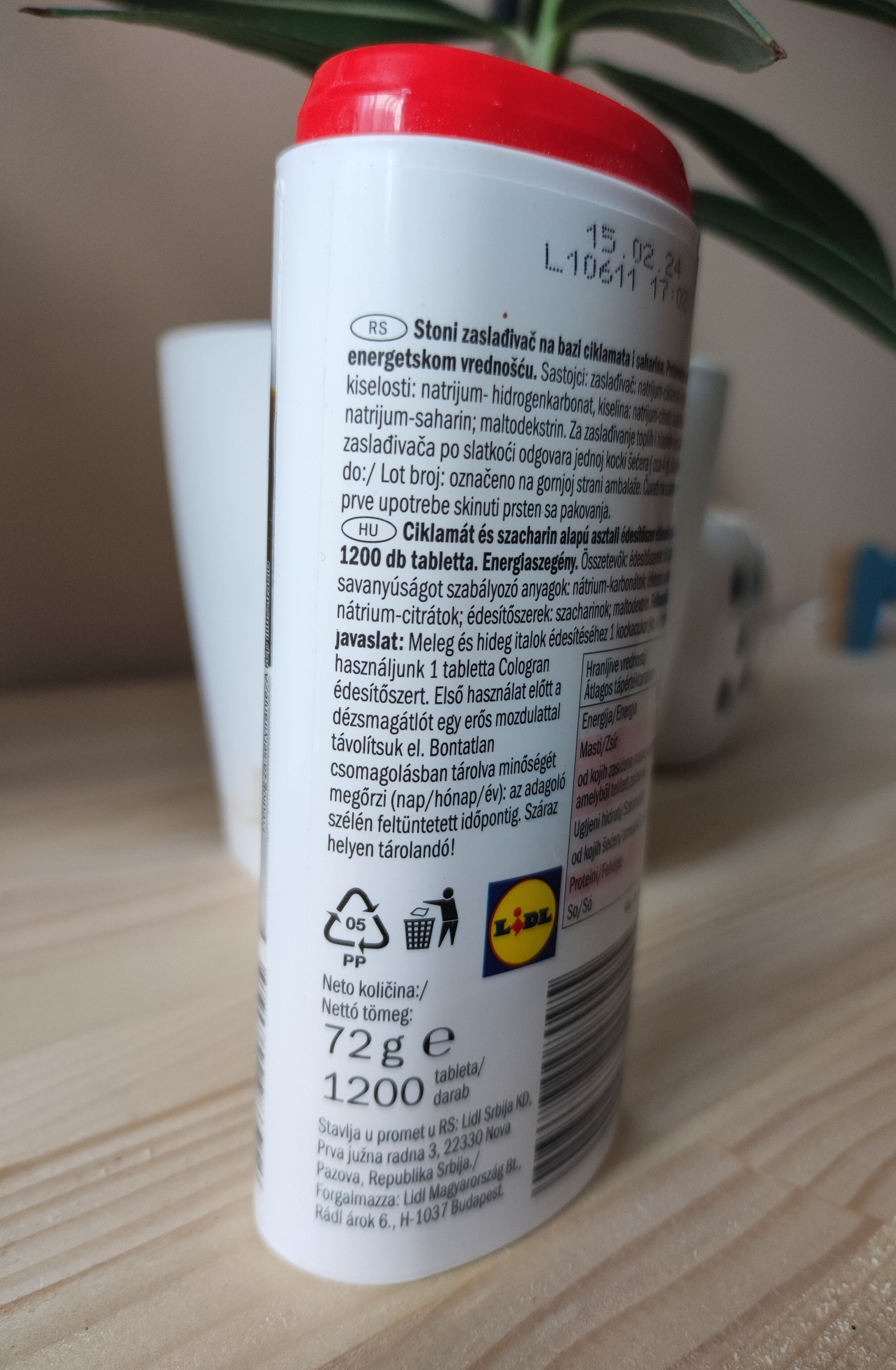Cologran - 72 g
Aquesta pàgina del producte no està completa. Podeu ajudar a completar-la editant-la i afegint-hi més dades a partir de les fotos ja disponibles, o fent-ne més amb l'aplicació de androide o iPhone / iPad. Gràcies!
×
Codi de barres: 4056489008095 (EAN / EAN-13)
Quantitat: 72 g
Empaquetament: Plàstic, en:Spender
Marques: Cologran
Categories: Edulcorants, Additius alimentaris, en:Sugar substitutes, en:Tabletop sweeteners, en:Lebensmittelzusatzstoff, en:Süßstoffe, en:Zuckerersatzstoffe
Etiquetes, certificacions, premis: Sense lactosa
Matching with your preferences
Report a problem
Fonts de dades
Producte afegit per kiliweb
Última modificació de la pàgina del producte per off-replace-bot.
La pàgina del producte, també editada per additives-app-chakib, charlesnepote, eatshalal, ecoscore-impact-estimator, halal-app-chakib, inf, joergz, kuttergrinch, musarana, openfoodfacts-contributors, prvcyfrk, ramplstilskin, roboto-app, rochus, scanbot, teolemon, yuka.SExzbE5wa0VtK1VFcWNZQjNFL2U0OUZPeEpxVVEwQ1dGODB5SVE9PQ, yuka.U3JBRVRaWUErNmxVdE04RDNpalQyOWhaNGJ5bFRYS3dCUFU3SUE9PQ, yuka.UXAxUUFvNHhnTkJReHYwUjRBUHIvc05WL3FDREF6aVVjdmdxSVE9PQ, yuka.V0tFTkZQOFB1dWdBbThVeC96ajF5TkJ5OTVHa2V6KzZOTElLSWc9PQ, yuka.YTZFS0g2Z05wdVlhb3RnanBUclM4NEpON01HaVVrV1pjY1kvSUE9PQ, yuka.YXI0OE5Jc09tTmdCeHZRNTd3amMxTkZXMXArTVFYR3dGOG94SVE9PQ, yuka.YklkYUc1eFloY0VvcE1RN3hrbnJ3UE51MVkya2ZrK1BJdE1JSVE9PQ, yuka.ZC93WUtLQUtqY0FBbnZadXdrUHg4L3RyeW9TMGRrUG1GYmM3SVE9PQ, yuka.ZXFkZUxaNGErZHd6dThRUjNSWGsxdWxYL0x5YmJIbWFOZGRQSUE9PQ, yuka.ZjRVTkY0NHRoK2tueS9CdjBTenI1c3RIMjV1TVVGT3FCODRjSVE9PQ, yuka.ZlowRE9id2pqYWdMdjlzN3h3UDgrOGdwLzY2QVpFS2RETlJOSVE9PQ.










